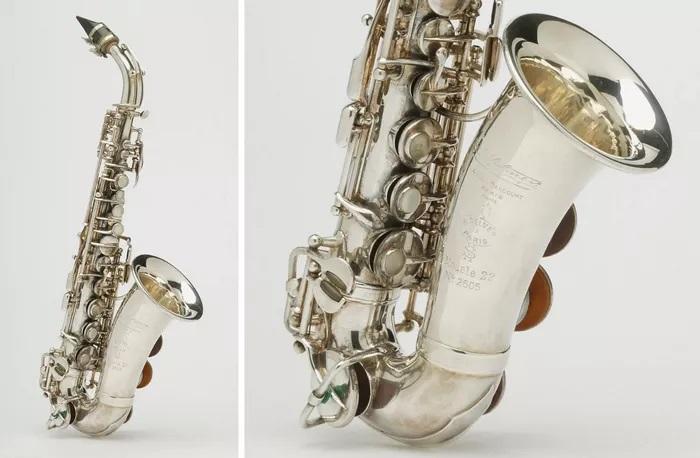What is Curved Soprano Saxophone: Key Features & Benefits

The curved soprano saxophone is a fascinating member of the saxophone family that often captures the interest of both new players and seasoned musicians. With its distinct shape and compact size, it offers a different playing experience compared to the more traditional straight soprano saxophone. Though it is not as widely used as its alto or tenor counterparts, the curved soprano sax has a loyal following thanks to its unique tonal qualities and visual appeal.
Understanding the Soprano Saxophone Family
To fully grasp what a curved soprano saxophone is, one must first understand the soprano saxophone family. The soprano saxophone is pitched in B♭ and is one of the smaller types in the saxophone family. It produces a bright and focused sound that sits comfortably above the alto sax in terms of range. The two main types of soprano saxophones are straight and curved. While the straight soprano resembles a clarinet, the curved soprano looks like a miniaturized alto saxophone.
What is Curved Soprano Saxophone?
The curved soprano saxophone features a bell that curves upward and a neck that curves down, similar in appearance to the alto saxophone. However, its size is significantly smaller, giving it a more compact and manageable form. This curvature affects the ergonomics, sound dispersion, and visual aesthetic of the instrument. Most curved soprano saxophones are made from brass and are lacquered or silver-plated for added durability and beauty.
How the Curved Shape Affects Sound
One of the most talked-about characteristics of the curved soprano saxophone is how its shape affects its sound. Due to the curved bell and neck, the sound tends to be slightly warmer and less direct than that of the straight soprano. The curved shape helps disperse the sound more broadly, which can be beneficial in smaller venues or ensemble settings. Many musicians describe the tone as rounder, softer, and more lyrical, making it an excellent choice for ballads and chamber music.
Comparing Curved and Straight Soprano Saxophones
While both versions are pitched in B♭ and share the same fingering system, they differ in more ways than just shape. The curved soprano saxophone typically has a more mellow tone, which some players prefer for jazz or classical music. In contrast, the straight soprano saxophone delivers a more piercing, focused sound ideal for solo or lead work in a band. Ergonomically, the curved version can be easier to hold, especially for players with smaller hands or for long performance sessions.
Benefits of Playing a Curved Soprano Saxophone
The curved soprano saxophone offers a variety of advantages. First, its compact design makes it easier to manage during long rehearsals or gigs. Second, its rounded tone is perfect for blending with other instruments. Third, the curved design can make it easier to position the instrument in a way that is more comfortable for some players, especially those who struggle with the straight soprano’s projection direction. Finally, the look of the curved soprano sax is visually appealing and can stand out on stage.
Challenges and Limitations
Despite its strengths, the curved soprano saxophone also comes with a few challenges. Intonation can be more difficult to control compared to other saxophones, especially in the upper register. Furthermore, due to its smaller size and tighter curvature, the tone holes and mechanisms are more compact, which can be tricky for players with larger hands. Additionally, fewer models are available on the market, and finding one with high craftsmanship might be more challenging than finding a straight soprano saxophone.
Best Uses and Musical Genres
The curved soprano saxophone finds its place in a variety of musical settings. In jazz, it provides a rich, nuanced tone that blends well in small combos. In classical music, its lyrical voice is favored for solo performances and ensemble work. It also shines in world music and experimental genres, where its unique tone color adds character and variety. Some players even use it in pop and fusion settings to offer a different sound profile than alto or tenor saxophones.
Historical Background
The soprano saxophone was invented by Adolphe Sax in the 1840s, alongside the rest of the saxophone family. The curved soprano sax was originally more common but lost popularity as the straight version became the standard. Over time, however, some manufacturers began reviving the curved soprano, catering to players looking for a distinct aesthetic and tonal experience. Jazz legends such as Sidney Bechet preferred the curved soprano for its sound and visual appeal.
Notable Manufacturers and Models
Several brands produce high-quality curved soprano saxophones. Yanagisawa and Selmer are considered top-tier, offering instruments with excellent craftsmanship and intonation. Jupiter and P. Mauriat also offer solid curved soprano models at mid-range price points. For beginners, brands like Jean Paul or Mendini might offer affordable entry-level options. Each model varies in tone, response, and ergonomics, so testing different models is crucial before purchasing.
Famous Musicians Who Played Curved Soprano Saxophones
Although fewer in number compared to alto or tenor saxophonists, several notable musicians have used the curved soprano saxophone in performances. Sidney Bechet, a pioneer in jazz soprano sax, often played a curved model. Some modern jazz and classical artists also explore the tonal palette of the curved soprano for specific projects or performances, demonstrating its expressive capabilities and unique charm.
Conclusion
The curved soprano saxophone is more than just a visually distinct instrument—it’s a compelling musical voice with rich character. Its unique tonal properties, comfortable ergonomics, and aesthetic appeal make it a worthwhile choice for players seeking a different sound. Whether you’re a jazz artist, classical performer, or an experimental musician, exploring the curved soprano saxophone can broaden your artistic expression and deepen your appreciation for the saxophone family.
- Art
- Causes
- Crafts
- Dance
- Drinks
- Film
- Fitness
- Food
- Игры
- Gardening
- Health
- Главная
- Literature
- Music
- Networking
- Другое
- Party
- Religion
- Shopping
- Sports
- Theater
- Wellness


